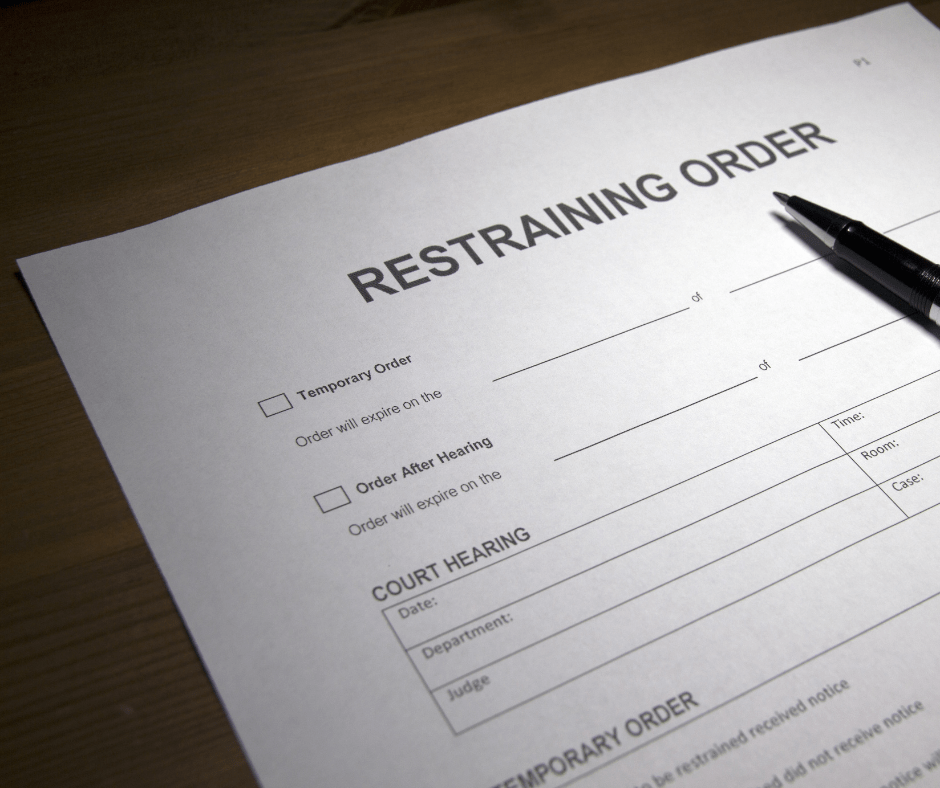For a variety of reasons, including small fights between couples or serious criminal accusations of stalking and sexual harassment, a no-contact order may be granted. No contact orders may also be sought in high-intensity divorces and separations, as well as in neighborly disputes. What precisely is a no-contact order, then? We’ll address all of your inquiries concerning no-contact orders—what they are, how can a victim get a no-contact order lifted, and how to prevent the issuance of an NCO—below.
What is the No-Contact Order?
Typically, a no-contact order indicates that the accused party, or criminal defendant, is
not to come into direct or indirect contact with, or come into view of, the protected individual or their dwelling. Direct contact with a protected individual can be through phone calls, letters, or visits to their residence, workplace, or educational institution. Indirect contact is when a defendant sends a message via a third party.
If the defendant attempts to contact you, it is crucial to inform the police and prosecutor’s office of the incident.
To decide what will happen next, the prosecutor’s office will examine the police report.
Only in criminal cases can the prosecutor’s staff request and the presiding court grant no-contact orders. A no-contact order could be imposed as a probationary or punishment requirement. It can be a requirement of bonding, recognition release, or bail. A no-contact order, if mandatory for a sentence or probation, remains in effect until the case is resolved or the sentence is completed. A no-contact order infraction may result in jail time and/or charges of invasion of privacy for the offender.
How to Prevent the Issuance of an NCO
The court will most likely issue an NCO, even if the victim requests not to have one. If there is no history of violence between the accused and the defendant and they are not afraid of each other, the accused victim might not want a no-contact order to be enforced. A victim should retain legal counsel if they wish to avoid having an NCO issued. A domestic violence lawyer in Seattle can assist the victim in persuading the judge not to issue an NCO.
You should take the issuance of an NCO against you very seriously. Violation of an NCO is illegal, even if the victim contacts you beforehand or doesn’t want the order to be in place. The victim will not face any consequences if they contact you, even after an NCO has been issued. On the other hand, it is a breach of the injunction if you reply to the victim’s messages.
What Could Happen If You Disobey a No-Contact Order?
Any violation of a no-contact order for domestic abuse is taken seriously by judges. It is customary to see breaking a no-contact order as a “slap in the face” to the criminal court system’s authority. A person’s bond or R.O.R. may be withdrawn, and a warrant for their arrest with a “No Bond Hold” may be issued if the court or the prosecution discovers that a “No Contact” order has been broken. This type of bond status indicates that an inmate cannot be set free from custody on bond.
The “Violation of Pre-Trial Release Conditions” offense is a distinct criminal charge that arises from violating a “No Contact” order. The prosecutor may therefore choose to add a new criminal count to the domestic abuse case that is currently underway.
If You Violate the Domestic Violence No-Contact Order, How Will the Court Find Out?
The judge may become aware of a no-contact order violation in many ways. The most straightforward approach is conceivably when a victim reports immediately to the police, the court, or the State Attorney’s Office that a defendant with a “No Contact” order in effect has contacted them as a condition of their release. In certain circumstances, the accused party may present text messages, emails, or voicemails from the accused party to the magistrate or the prosecutor. The defendant frequently gets in touch with the accused on their own and arranges a meeting; this happens frequently. But then something happens, and the police are aware. A third possibility that can also happen is that, despite the defendant and the accused victim wanting contact and being in good communication, a friend or family member who doesn’t approve of the relationship could “blow the whistle.”
The aforementioned instances demonstrate the variety of ways in which a court may become aware of a violation of the “No Contact” order, which could have extremely dire repercussions. Because of this, if you both want to talk and work on your relationship, you need to remove the “No Contact” order.
How Can a Victim Get a No Contact Order Lifted?: Methods for Removing a No-Contact Provision
The defense attorney must submit a Motion to Modify Bond or Probation to end or remove a no-contact clause. The judge will typically want to know whether the victim agrees to contact and, if so, what kind of contact. It can be difficult to remove the no-contact clause if the victim refuses to communicate. Depending on the situation, a defense attorney may speak with the victim and, if they consent freely, ask them to testify or produce documentation demonstrating their lack of desire for a no-contact order.
Even if the offender and victim wish to have the no-contact order lifted, the judge may not agree. The prosecutor may choose to support, oppose, or let the judge decide whether to grant the defense’s Motion to Modify Bond or Probation. Prosecutors often disagree and are against these motions. Judges often hesitate to waive no-contact requirements, even when the victim, defendant, and prosecution agree. An accomplished defense attorney will know how to best present their case for bail or probation reduction.
How Can a Victim Get a No Contact Order Lifted?: FAQs
In British Columbia, How Can I Have a No-Contact Order Lifted?
How can I modify the no-contact order? The court that issued the order may be asked to revise or amend it. Your spouse has to consent to the modification and show up in court to explain. The judge must concur that there is no longer any risk of damage from you to your spouse or any of your partner’s children.
How Can a Victim Get a No Contact Order Lifted?: In Virginia, How Can I Obtain a No-Contact Order?
A magistrate in the Court Service Unit of a Juvenile and Domestic Relations Court, or a General District Court or Circuit Court, will hear your plea for an emergency order. It is also possible for a law enforcement officer to ask to give you one.
How Can a Victim Get a No Contact Order Lifted?: What is meant by “peace bonded”?
A peace bond is a court order designed to safeguard an individual who has been threatened but is not in danger. The person who made the threats will deposit money with the court when the judge issues the peace bond.
How Can a Victim Get a No Contact Order Lifted?: How Can I Obtain a BC Peace Bond?
For a peace bond, you can approach the RCMP or police. Or you can submit a personal application. The Abuse & Family Violence webpages of Legal Aid BC detail the distinctions between family law protection orders and peace bonds, as well as how and when to apply for each.
How Can a Victim Get a No Contact Order Lifted?: Conclusion
When a person is guilty of domestic abuse, the court usually issues a no-contact order. The criminal will face severe penalties, including jail time, if they attempt to contact the assault victim. But sometimes it’s not feasible to have a no-contact rule.



